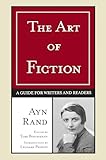How did we live without it?
We have the power to find virtually anything on the Internet. And that power is called Google Search.
Moments ago, I found a question in my FAQ system (horray!) from a reader of one of my long out-of-print books (darn!). He asked a question about an error message he’d seen (that I’d never encountered) while he was attempting to build additional administrative pages for a FileMaker Pro CDML-published database.
The book he’d bought is called Database Publishing with FileMaker Pro on the Web and it dates back to April 1998. It’s long out of print. If I recall correctly — I’m not at my office so I can’t consult my copy of the book — the book covered FileMaker Pro 3, which was the first version of FileMaker to support Web publishing. FileMaker Pro is now in version 8.5 and no longer supports CDML for Web publishing. CDML was the language and technology that FileMaker, Inc. bought from the Lasso folks to make FileMaker Pro Web publishing work.
So it should come as no surprise that I was unable to answer his question. And unable to replicate it, of course.
But Google has all the answers and it proved it again yesterday. I did a Google search for CDML Error 102 and Google came up with a list of Web pages that discussed the problem. I suggested this as a way for the person with the question to find his answer. (It would be silly for me to repeat what was on those pages when he could just as easily find the same pages himself.)
Google is like this. Have a question? Google it. If you enter the right search phrase, Google will come up with a Web site that answers the question. I think I can report a 90% results rate. And considering some of the questions I come up with sometimes, that’s pretty darn good.
The trick, of course, is to come up with the right search phrase. Googling a single word won’t usually get the results you seek. You need to come up a string of words that succinctly describes what you are searching for. In the example above, if I’d entered FileMaker Error, a much more general search phrase, I seriously doubt whether I’d see any results about the specific CDML error code the reader was getting. If a search phrase doesn’t get desired results, rethink it and try another phrase. In my example, I got the results I was seeking right away, so a second try wasn’t necessary.
With the amount of junk out there on the Web — including, some people might say, sites like this one — we’re very fortunate to have search technology like Google’s available to us. It helps cut through the chaff to get to the important stuff we want (or need) to read.




